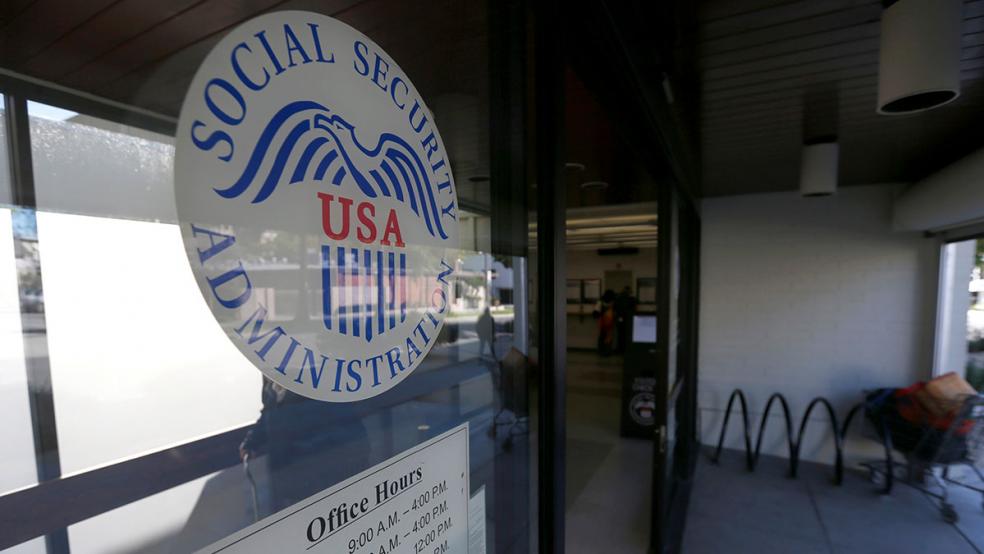President Trump’s budget unveiled last month contains numerous policy changes and experimental programs in the Social Security Disability Insurance program that the administration claims could save at least $72 billion over the coming decade. The savings would all but bridge a long-term funding gap in the program that covers 11 million people unable to work because of significant illness or impairment.
The proposals are controversial because Trump had vowed during the campaign to leave Social Security untouched and he appeared to be reneging on that pledge. However, OMB Director Mick Mulvaney has argued that while the retirement portion of Social Security is off limits, the troubled disability insurance program is fair game.
Related: Who Gets the Most in Disability Pay? 8 Key Social Security Facts
Although the Social Security Disability Insurance (SSDI) program is a vital source of income for Americans with conditions that prevents them from participating in “substantial gainful activity,” it also has been wracked by incompetent oversight and outright fraud. Indeed, a GAO report issued when Congress was acting to save the disability insurance program from bankruptcy in 2015 showed that the Social Security Administration staff had frequently bypassed established tracking procedures or provides limited oversight, which led to billions of dollars of unwarranted “overpayments” to beneficiaries.
The current average benefit paid to disabled workers is $1,171 a month, or about $14,000 a year. The Social Security Administration requires that beneficiaries promptly report their work activity, including starting a new job or a change in wages.
Between fiscal 2005 and 2015, the SSA made $12.2 billion disability insurance “overpayments” to beneficiaries who had returned to work and had earnings above the program limits, according to the Government Accountability Office.
Trump’s proposals range from cracking down on “double dippers” who simultaneously claim disability insurance and unemployment compensation to tightening eligibility requirements to spurring or forcing beneficiaries to reenter the workforce.
Related: Here’s How Two Lawmakers Plan to Secure Social Security’s Troubled Future
The Committee for a Responsible Federal Budget, a spending watchdog group that frequently has criticized Trump’s budget and tax cut proposals, has hailed Trump’s proposals for reforming the SSDI system that would “meaningfully improve its solvency.”
“While the estimated savings are likely too high, the approach put forward by the administration is a sensible one” and is consistent with some ideas previously advanced by CRFB.
Beyond the perennial problem of government overpayments, federal investigators have repeatedly uncovered schemes involving hundreds of millions of dollars’ worth of fraud in which doctors issue phony diagnoses of physical or mental impairment for beneficiaries.
What’s more, at the height of the Great Recession and the aftermath, about 117,000 Americans double-dipped in the program by cashing unemployment and Social Security disability checks. That maneuver technically was not illegal, but it cost taxpayers a combined $856 million in fiscal 2010 alone.
Trump’s budget would disallow the simultaneous receipt of SSDI and unemployment insurance benefits, arguing that they are generally for opposite purposes because one is aimed at helping people who cannot work and the other is for people who are actively looking for work. The Obama administration and a number of Republican lawmakers previously endorsed this change.
Related: $11 Billion in Excess Disability Payments Found by GAO
Here is a summary of several other proposal in the Trump budget for reforming the Social Security Disability Insurance program:
- Place a limit on retroactive benefits. Currently beneficiaries are entitled to a lump-sum payment covering up to one year of eligibility before a beneficiary’s application date. Trump’s plan would limit that bonus to just six months of benefits.
- Improve the hiring process for administrative law judges. The quality of these judges is uneven, and the proposal would create a one-year probationary period to insure they are performing satisfactorily before being converted to a lifetime appointment.
- Improve program integrity. This calls for tougher measures to increase the recovery of overpayments, making it impossible to discharge Social Security debts in bankruptcy proceedings and holding facilitators of fraud liable for overpayments.
- Provide more work incentives and support. This is one area in which the administration can score some of its biggest savings – as much as $50 billion over five years – by testing and implementing new approaches to encouraging beneficiaries to find jobs and go back to work. The administration would create an expert panel to recommend ways to boost labor-force participation based on the success of demonstration projects.
These demonstration projects would be varied, including providing a number of coordinated health and job services to workers with disabilities. Other ideas include imposing time limits on benefits as an incentive for recipients to go back to work.





